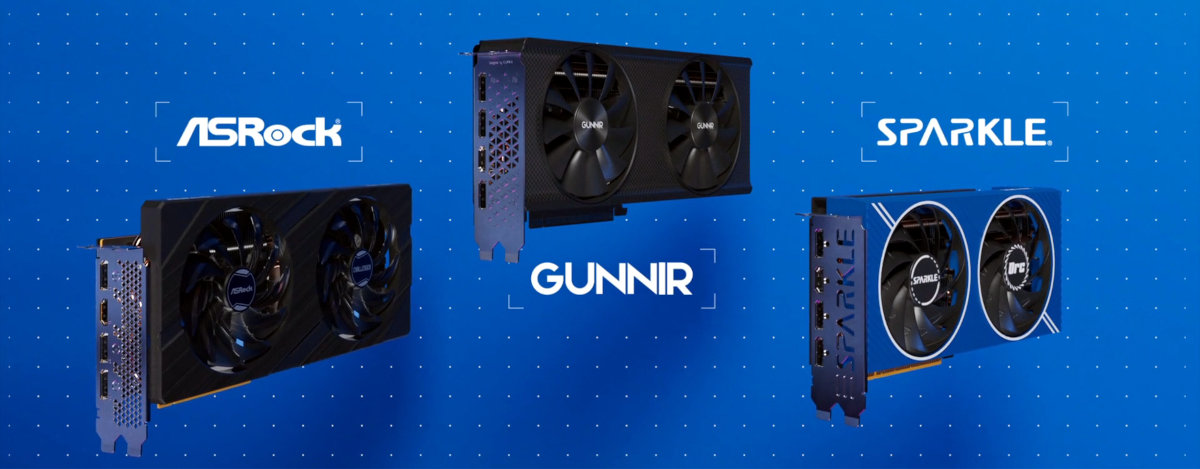

One year ago (almost to the day) Intel presented its A770 and A750 cards to the world. These were reasonably priced cards with reasonable performance, but were not added to our build chart then because—in addition to other minor issues with them—they suffered from two major flaws:
-
- The performance in old titles was poor.
- The performance on old systems (without Resizable BAR) was poor.
It has been a year, and you still need a system that has Resizable BAR, but that is available on all modern platforms launched in the last ~3 years, so it is less of an issue. More importantly, Intel’s latest drivers have dramatically improved performance in older games, between 20%-40%! That is a huge improvement.
Today, Intel launched the A580, prompting a second look into Intel’s previous cards. Since all three are based on the same silicon, we will look at them together.
How Intel’s A580 and Other GPUs Measure Up Today
-
- The A770 is a $280 card with performance that is on-par with the $270 RX 7600
- The A750 is a lot cheaper at $200, and is a great alternative to the $210 RX 6600
- The A580 that was launched today is $180, and is decently priced… but… $20 less than the A750? There is no competition for the A580 at this price.
All three cards are competitively priced, and perform well. As displayed in the image at the top of this post, there are multiple custom cards available from various manufacturers (there were few or none last year), and they are available from major retailers (availability was very poor last year).
What’s the Catch?
There is always a catch though, so what are the cons of these cards?
For one, they draw a lot more power (and hence generate more heat) when compared to the competition. They are mid-tier cards so the power draw is not extreme, but if you want power efficiency, you will need to look elsewhere.
The custom options for Intel cards remain far fewer than the custom options for AMD and nVidia, so your choices are quite limited.
Lastly, for those with systems that are older than (roughly) 3 years, your system may not support Resizable BAR, which these cards need to hit full performance.
A Verdict for the A580, A750, and A770
Overall, these new cards are a good addition, and are a welcome relief from the duopoly of AMD and nVidia. The performance is good; the price is good; and they target mid-tier budgets, which are in severe need of love and attention. If the A580 price drops by a very small $20 or so, it would become an excellent purchase.
I am happy that Intel did not give up on discrete graphics cards, and that it improved its drivers to the point where last year’s bad cards have become this year’s good cards. If I meet a programmer from Intel’s discrete GPU side, I will treat them to some boba. Let us hope that Intel has more cards on the way—hopefully something that will reign in the insanity that is happening in the high-end market.
Going Forward
As far as our primary build chart is concerned:
We will be adding the A580 to the Fair tier, the A750 to the Fair and Good tiers, and the A770 to the Very Good tier.






